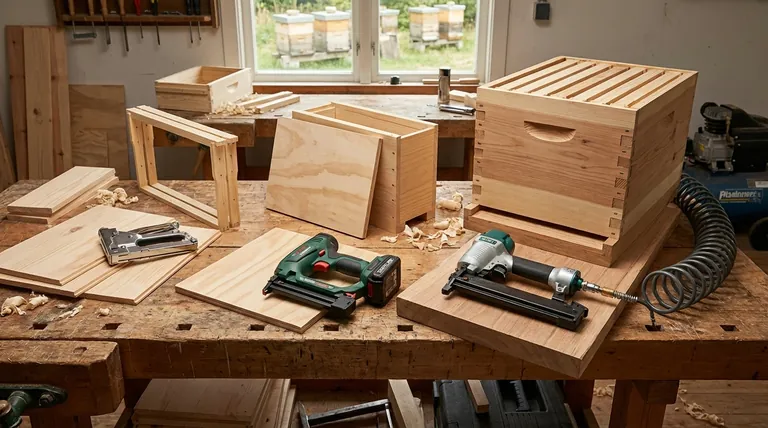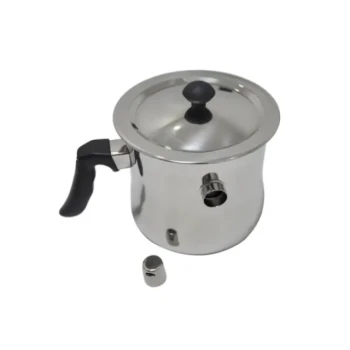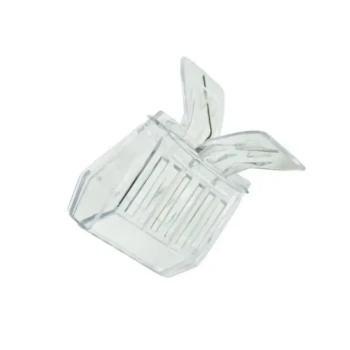For woodworking, the most powerful and effective tool is a pneumatic staple gun, especially for hardwoods and construction tasks. However, depending on the specific project and type of wood, electric and even manual staple guns can also be suitable choices.
The question is not which single staple gun works for wood, but which class of staple gun—Manual, Electric, or Pneumatic—has the right power and precision for your specific woodworking task.

Matching the Tool to the Task
Choosing the right staple gun requires matching its power source and capabilities to the demands of your project, from light crafts to heavy-duty construction.
Manual Staple Guns: For Light-Duty Tasks
Manual staple guns are best for small projects involving soft woods. They are powered entirely by your hand strength.
Think of tasks like attaching fabric to a softwood frame, building picture frames, or light craft projects. They are portable and inexpensive but lack the power for dense materials and can cause hand fatigue.
Electric Staple Guns: The Versatile DIY Choice
Electric staple guns, available in corded and cordless models, offer a significant step up in power from manual versions. They are a common choice for general DIY and hobbyist woodworking.
These are ideal for projects like upholstery, attaching thin plywood paneling, or cabinet assembly. They provide consistent driving power without the effort of a manual gun, but may struggle with very dense hardwoods.
Pneumatic Staple Guns: The Professional Standard
For demanding projects, a pneumatic staple gun is the undisputed best choice. These tools use compressed air to drive staples with exceptional force, speed, and precision.
This is the tool for carpentry, flooring installation, sheathing, and any task involving hardwood. The power of a pneumatic gun ensures staples are set flush and securely every time, but it requires an air compressor to operate.
Understanding the Trade-offs
The most powerful tool isn't always the best choice. You must consider the balance between power, portability, and cost.
Power vs. Portability
A manual stapler can be carried in a pocket, while a pneumatic gun is tethered to a bulky and heavy air compressor. Cordless electric models offer a great compromise, providing significant power with complete freedom of movement.
Cost and Complexity
Manual staple guns are the cheapest and simplest option. Electric models represent a moderate investment. Pneumatic systems are the most expensive, as you must purchase both the staple gun and a compatible air compressor.
Staple Size and Gauge
The power of the gun directly relates to the staples it can fire. Pneumatic guns use heavy-gauge, long staples (known as crown staples) needed for structural integrity. Manual and electric guns are limited to smaller, lighter-gauge staples suitable for non-structural applications.
Making the Right Choice for Your Wood Project
Select your tool based on the demands of your work.
- If your primary focus is light crafts or small repairs on soft wood: A manual staple gun is a sufficient and cost-effective tool.
- If your primary focus is general DIY, upholstery, or assembling projects with pine or plywood: A quality electric staple gun offers the best balance of power, convenience, and cost.
- If your primary focus is construction, flooring, or working with hardwood: A pneumatic staple gun is the only choice for professional, reliable results.
Choosing the correct staple gun ensures your work is done efficiently and securely.
Summary Table:
| Staple Gun Type | Best For | Power Source | Key Consideration |
|---|---|---|---|
| Manual | Light crafts, softwoods, picture frames | Hand strength | Low cost, portable, but low power |
| Electric | General DIY, upholstery, plywood | Electricity (corded/cordless) | Good balance of power and convenience |
| Pneumatic | Construction, hardwood, flooring | Compressed Air | Maximum power and speed, requires air compressor |
Equip your apiary or supply business with the right tools for the job.
Whether you're building hive boxes, frames, or other essential wooden components, using the correct tool is critical for efficiency and durability. HONESTBEE supplies commercial apiaries and beekeeping equipment distributors with high-quality, durable tools and supplies through our wholesale-focused operations.
Let us help you build stronger. Contact our team today to discuss your wholesale supply needs for staple guns and other essential beekeeping equipment.
Visual Guide

Related Products
- HONESTBEE 72 Frame Industrial Electric Honey Extractor for Beekeeping
- HONESTBEE 3-Frame Manual Acrylic Honey Extractor
- Plastic Hand Crank 2 Frame Honey Extractor Low Price
- electric honey extractor honey centrifuge 3 frame honey extractor stainless steel honey frame extractor
- Wholesales Dadant Size Wooden Bee Hives for Beekeeping
People Also Ask
- What are the advantages of automated honey extractors in terms of time efficiency? Boost Your Harvest Speed
- How is honey harvested from Langstroth hives? A Guide to Efficient, Comb-Preserving Extraction
- Why is preserving honeycomb integrity important, and how do automated extractors help? Boost Hive Health & Honey Yields
- What should a beekeeper do after extracting honey from supers? A Guide to Harvest Management
- Why do beekeepers have to lift a lot of weight at the end of a growing season? The Reward of a Heavy Harvest



















